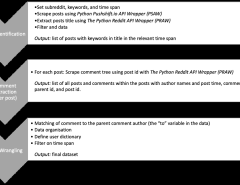Authors: Thomas A. Lasko, John M. Still, Thomas Z. Li, Marco Barbero Mota, William W. Stead, Eric V. Strobl, Bennett A. Landman, Fabien Maldonado
Published on: February 08, 2024
Impact Score: 8.3
Arxiv code: Arxiv:2402.05802
Summary
- What is new: Using unsupervised machine learning to define clinical disease patterns more precisely through probabilistic independence, uncovering 2000 clinical signatures from Electronic Health Records.
- Why this is important: The challenge of insufficiently precise diagnosis of clinical diseases leading to treatment failures.
- What the research proposes: An unsupervised machine learning approach that disentangles the imprint of causal latent sources of disease on medical records to define disease patterns more accurately.
- Results: Improved discrimination in lung cancer prediction and the identification of pre-nodule signatures indicative of undiagnosed cancer.
Technical Details
Technological frameworks used: Probabilistic independence
Models used: Unsupervised machine learning
Data used: 269,099 Electronic Health Records
Potential Impact
Healthcare providers, medical diagnostics companies, and health insurance firms could benefit, while traditional diagnostic methods might be disrupted.
Want to implement this idea in a business?
We have generated a startup concept here: MediPattern AI.


Leave a Reply